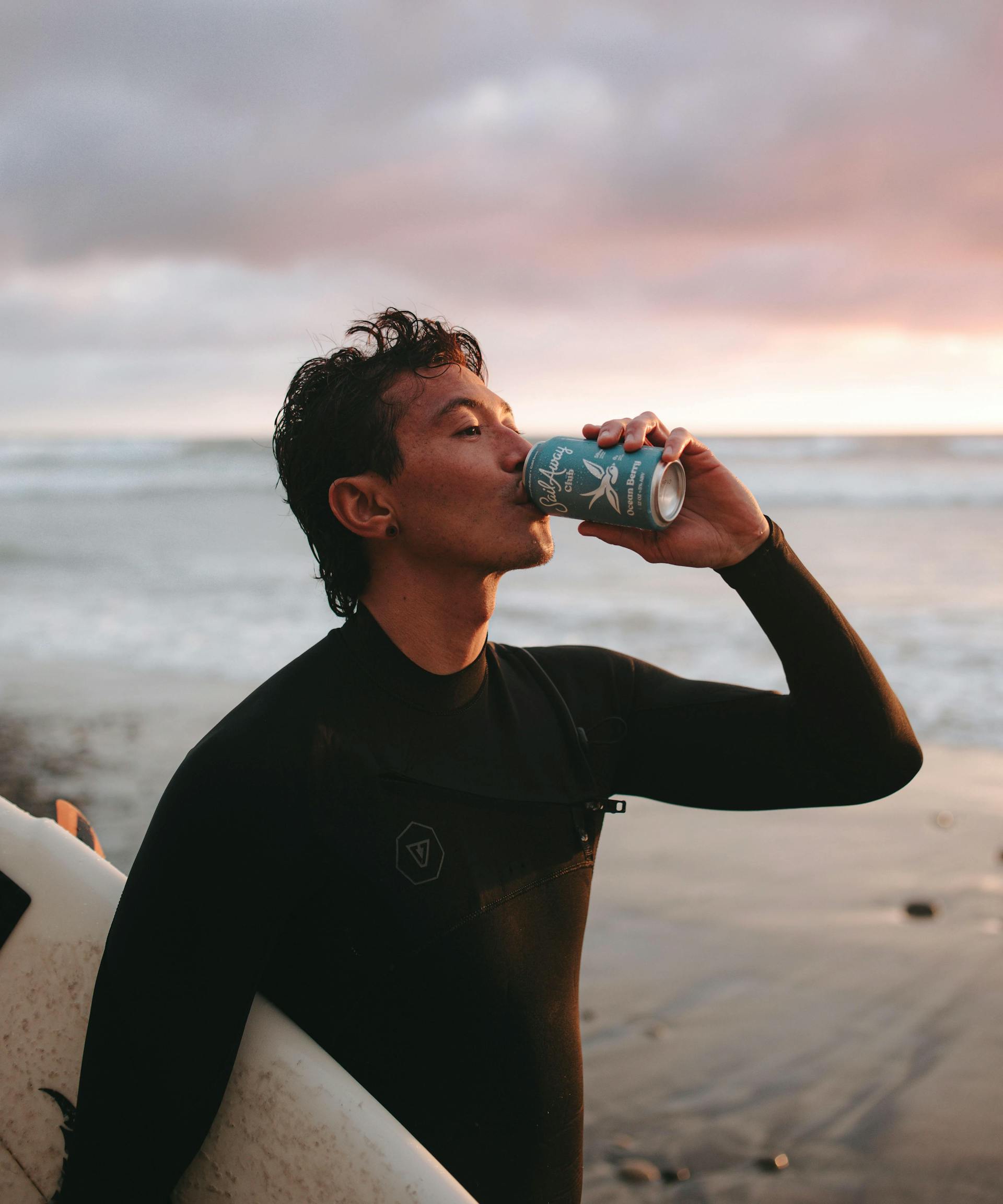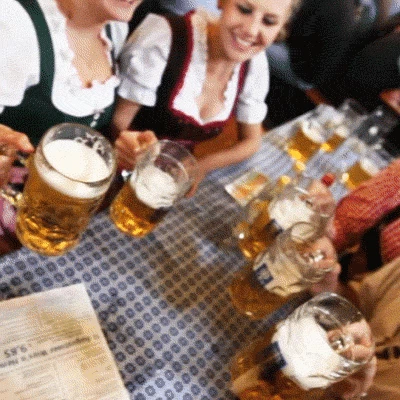Dear Men, Please Stop Drinking Beer. It's Making You Effeminate And Infertile
Beer is advertised as a man’s man drink, the elixir of masculinity and the first choice of any macho lad out on the town. Beer commercials specifically link the consumption of beer with strong male sexuality. We’ve all seen the bikini-clad women dancing seductively with a pint in each hand much to the delight of male patrons on screens.

No one could have foreseen the disastrous effects beer consumption has on overall male health, as well as male fertility, from the way we culturally think about beer drinking. A cheeky pint or two at the pub, or cracking a can at the end of a long work day on the couch is seen as a harmless and causal way for men to wind down from the daily grind.
This flies in the face of reality, though, as the physiological damage that frequent beer drinking does to the male body is so considerable that we could even make the argument that beer is a biological weapon targeted against men. But let’s not spend too much time considering the irony of using virulent male sexuality to sell a drink that can cause men to grow breasts. Rather, let me explain how and why this happens.

The Introduction of Hops in Beer
Before the German Beer Purity Law was established in 1516, dictating that beer only be made with water, hops, and barley, beer was made with a variety of complex herbal and medicinal ingredients called gruit and was even considered a health drink. Once puritan Protestant leaders found that the ingredient hops was a known libido reducer, though, there began a cultural push to enforce that beer only be made with these three ingredients. How very prudish!
Martin Luther became an advocate for the wide usage of hops in beer.
Moreover, they did it to spite the 16th century Catholic Church, which remained staunchly opposed to the use of hops in beer production, regarding it as a weed. Martin Luther became an advocate for the wide usage of hops in beers sold at taverns and even in his own homebrew. In a practical sense, hops preserved beer for longer, making it a viable product for international trade. Beer made with hops became a beloved symbol of the Protestant work ethic and established the use of hops predominantly in the industrial manufacture of all beer henceforth.

The Discovery of Hormone Disruptors in Plants
In 1951, we discovered the estrogenic potential of plants when Australian sheep, grazing on a species of estrogenic clover, became infertile, ravaging the wool industry. Once we understood the hormone-disrupting power of plants, many other mysterious occurrences became more clear. Then, a theory was suggested that hops may also have estrogenic properties due to the fact that women who handled hops for a day when harvesting crops for beer manufacturing would immediately start their periods.
It was found that hops do indeed contain very high levels of phytoestrogens, even more than in soy. The soy meme, though effective and revealing about the feminization of men in modern times, is largely misleading in terms of the actual effect soy has on male health. Under 14 servings of soy a day, which is visible in the diets of Japanese men, has no notable negative side effects. However, many Japanese soy foods are fermented, like miso, soy sauce, and natto, which is often very different than an American vegan soy-based diet.
Hops have concentrations of phytoestrogens 50 times more potent than what’s found in soy.
Hops, on the other hand, have concentrations of phytoestrogens which are 50 times more potent than the phytoestrogen known as genistein found in soy. Once studied, it was revealed that there are three phytoestrogens found in hops: daidzein, genistein, and 8-prenylnaringenin. 8-prenylnaringenin, also known as 8-PN, turns out to be one of the most potent phytoestrogens known in the plant world.
Interestingly, the amount of 8-PN in beer alone is too low to cause concern on its own. It wasn’t until 2005 it was found that the intestinal microbiome is the culprit in increasing the exposure concentration to the phytoestrogen 10-fold after beer was consumed.
The Effects of Phytoestrogens in Beer on Male Physiology
When studied, the urine of men who had drunk even moderate amounts of beer showed that there was an estrogenic effect that lasted for days in their bodies because the microbial community in their gut kept churning out more and more 8-prenylnaringenin after coming into contact with beer. It’s also worth noting that estrogenic properties aside, the mere alcohol content in beer has been shown to lower testosterone and raise estrogen levels in men within as little as 3 weeks.

It’s important to note that men don’t necessarily need to be drinking beer to the point of intoxication for these estrogenic effects to occur, but of course, the more beer a man drinks the more estrogen dominance will affect his biology.
When men live in a state of estrogen dominance, they can become subject to compounding health issues which, like a vicious cycle, perpetuate each other. Estrogenic bodies often retain water and gain weight more easily leading to obesity. When obesity becomes a factor then your quality of sleep, energy levels, and mental health are greatly affected.
Excess estrogen alone has been strongly linked to male infertility.
It can also be harder to lose weight, even with a healthy diet and exercise, when you’re in a state of estrogen dominance. More estrogen means you’ll have more body fat, and more body fat means you have more estrogen in your system. Studies also show that the increased scrotal temperature and poor quality sleep due to obesity both have dramatic effects on sperm motility and health.
Furthermore, excess estrogen alone without the added component of obesity has been strongly linked to male infertility. Thankfully, these issues are often reversible by improving diet and lifestyle and by avoiding estrogenic toxicity in our environment.
Optimizing testosterone is also a treatment for repairing the damage done to male fertility by having estrogen dominance in the male body. Normalizing the T can reverse male infertility. This can be done by weightlifting on a regular basis which has been proven to be the best form of exercise for raising testosterone levels.
Closing Thoughts
Hops are a highly estrogenic plant, which is the main ingredient in beer next to water. Drinking beer in excess not only has a sterilizing effect on men but also feminizes their bodies by reducing testosterone and increasing estrogen. We must think critically about why this product has been specifically advertised towards men and to what end.
It’s imperative that we work towards reestablishing safe environments that allow our bodies to function the way they were designed to function. This will require the discipline and the willingness to endure the discomfort of breaking social norms and habits like frequent consumption of alcohol. To optimize our biology, hormone balance is key and knowledge is power. Remember this the next time you’re invited out for drinks with your friends. Exercising moderation and caution is highly recommended.
Help make Evie even better! Take the official Evie reader survey.